8. The Abyss
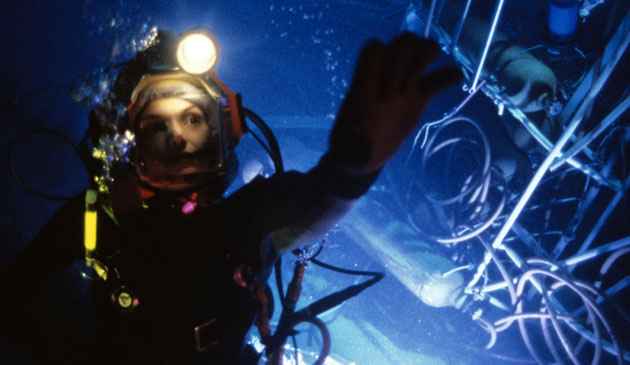
James Cameron’s career has been defined by raising the bar for what can be expected from visual effects. The director’s love affair with CGI began with 1989’s The Abyss, when it became clear that only digital techniques would be able to bring the sci-fi thriller’s intelligent water tentacle to life.
Dubbed “the pseudopod”, this H20-based alien simply could not have been realized any other way. Cel or stop motion animation were quickly determined as being inadequate to rise to the challenge of creating the pseudopod’s rippling, fluid surface – especially when it adopts the likenesses of cast members Mary Elizabeth Mastrantonio and Ed Harris.
ILM’s Academy Award-winning work here tends to be overshadowed by the digital effects it used to create liquid metal antagonist the T-1000 in Cameron’s Terminator 2: Judgment Day. And while the CGI in that film is undeniably more impressive (and memorable), it wouldn’t have been possible without the technical breakthroughs made on The Abyss.
9. Jurassic Park
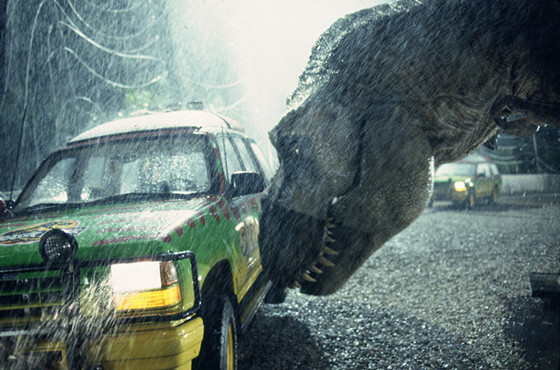
It’s no exaggeration to say that Jurassic Park pretty much single-handedly dethroned stop motion as the go-to special effects tool for creature animation in live-action filmmaking. The photorealistic digital dinosaurs in Steven Spielberg’s 1993 adaptation of Michael Crichton’s sci-fi novel made a compelling case that CGI could produce more life-like results than its more well-established counterpart.
Blending state-of-the-art practical puppets fabricated by animatronics genius Stan Winston and his team with pixel-powered dinosaurs developed by ILM, Jurassic Park made audiences believe Spielberg had somehow captured actual footage of the extinct lizards in the wild.
The fluidity of movement the believably-textured digital models demonstrated – coupled with how seamlessly they’re integrated into the on-set footage – was something stop motion simply could not match. The impact of Jurassic Park’s visual effects on the industry was immediate: CGI was in, stop motion was out, and – for better and for worse – movie making would never be the same again!
10. Forrest Gump
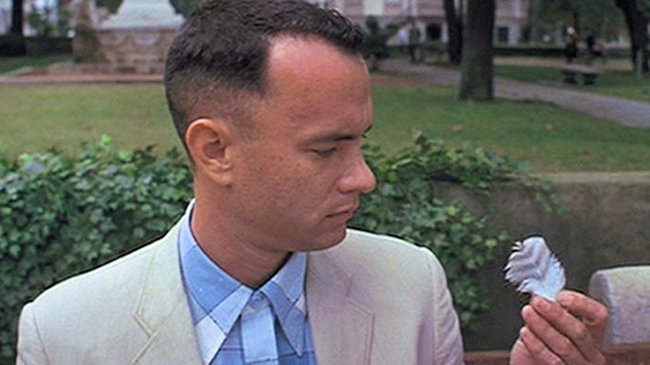
A fair percentage of the CGI in 1994 Best Picture winner Forrest Gump hasn’t aged all that well – which doesn’t make it any less brilliant or groundbreaking. For his comedy-drama take on Winston Groom’s novel, director Robert Zemeckis called upon the effects wizards at ILM to insert star Tom Hanks into archival news footage, enabling him to interact with deceased celebrities and politicians.
These shots more than hold up even now, almost 25 years later – although it must be said that the visual effects utilized to replace these long-dead figures’ mouths in order to facilitate new dialogue have fared less well.
But this is a minor quibble next to ILM’s extraordinary achievements in Forrest Gump, which also include digitally removing Gary Sinise’s legs for his role as amputee Lieutenant Dan. This more subdued approach to CGI might not be as immediately awe-inspiring as those in contemporary films like Jurassic Park, but it signalled to filmmakers that the storytelling canvas available to them was rapidly expanding!
11. Casper
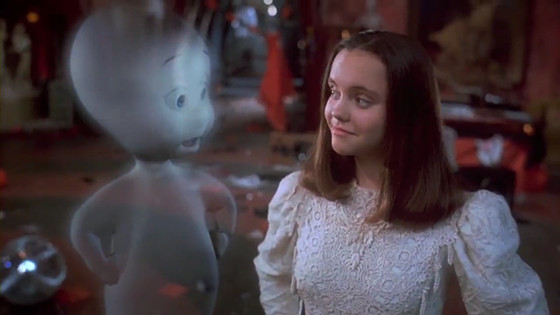
Aside from being a disarmingly melancholy family joint, Casper constitutes another oft-overlooked milestone in the ongoing development of digital effects technology. Based on the exploits of Harvey Comics’ eponymous friendly ghost and his less friendly trio of uncles, Brad Siberling’s fantasy comedy was the first live-action film to feature an all-CGI character in a lead role.
What’s more, the digital ghosts cooked up by ILM proved that synthetic actors – even ones rendered in an intentionally cartoony style – could convincingly act alongside their flesh-and-blood cast members. This is especially so where Casper himself is concerned, as the pixelized performer more than holds his own in several emotional scenes he shares with accomplished actors Bill Pullman, Christina Ricci and Amy Brenneman.
This might not seem like much today, where it’s not uncommon for a film’s entire acting roster to be made up of CGI thespians. But back in 1995 – when such a notion was unthinkable – Casper proved that not only could it be done, but done well!
12. The Matrix

Visual Effects Supervisor John Gaeta and his team pulled off a major coup when The Matrix beat out CGI extravaganza Star Wars – Episode I: The Phantom Menace for the Best Visual Effects Oscar in 2000. But while both movies included some truly awesome digital effects work, there’s really no question that the Wachowskis’ cyberpunk martial arts flick deserved its golden statuette.
Think back to 1999 when The Matrix first came out, and how many subsequent films attempted to ape (either sincerely or in jest) its iconic “bullet time” slow motion effects. None of these imitators came close to capturing the quality of what Gaeta and co. accomplished – but then, the precise formula of CGI environments, computer modelled camera set-ups and green screen shooting isn’t something that can be replicated overnight.
Sure, neither the Wachowski’s nor Gaeta invented the “bullet time” concept, and more primitive attempts at similar live-action visuals had been staged before. Yet they were definitely the ones to perfect the effect, and their success didn’t just popularize it, but left an indelible imprint on how slow motion gunplay would be presented in future.
13. The Lord Of The Rings: The Two Towers

There had been digital actors long before The Two Towers was released, but the performance by CGI creation Gollum in Peter Jackson’s second Lord of the Rings instalment was a watershed moment for artificial artisans. Driven by Andy Serkis’ underlying powerhouse turn, Gollum connected with audiences on a genuinely emotional level, delivering a nuanced dramatic display that was at turns tortured, heartbreaking and funny.
Weta Digital’s spellbinding CGI work on Gollum blended motion capture techniques with traditional key frame animation, and nabbed the visual effects house its second, well-deserved Oscar. But more importantly, it firmly established Weta as being at the forefront of the digital actor frontier – and finally laid to rest any doubts that synthetic performers were every bit as viable as their flesh-and-blood counterparts!
14. The Curious Case Of Benjamin Button
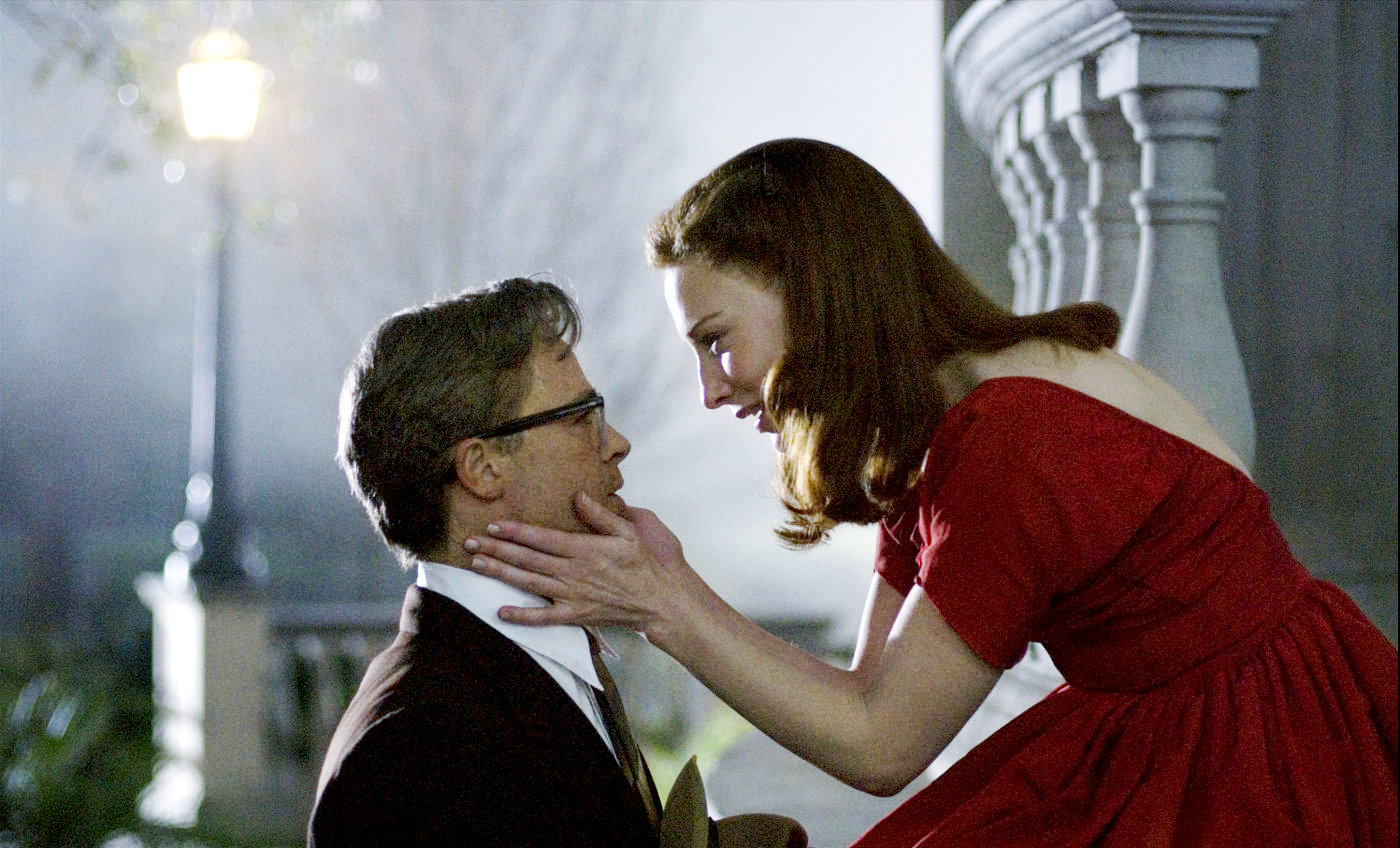
Whether you love or loathe the current trend of digitally de-ageing or ageing actors – and for the record, we’ve got a foot in both camps – it all started with David Fincher’s The Curious Case of Benjamin Button. For his adaptation of F. Scott Fitzgerald’s short story of the same name, Fincher largely eschewed prosthetics when it came time for stars Brad Pitt and Cate Blanchett to portray their characters at different ages.
Instead, he enlisted the visual effects artists at Digital Domain to manipulate the likenesses of both actors, with the CGI used to depict Pitt both as a much older and far younger man a particular stand out. Benjamin Button’s Best Visual Effects Academy Award was as close to a sure thing as there is in show business – as was the subsequent shift away from make-up and re-casting in favor of digitally-based solutions that followed.
15. Avatar
![]()
Weta Digital broke a lot of new ground on James Cameron’s 3D sci-fi epic Avatar – developing new digital lighting systems, building the largest ever motion capture performance space and more. But without doubt the Kiwi effects house’s biggest achievement on this 2009 blockbuster was the creation of the first true performance capture technology.
Collaborating closely with Cameron, Weta manufactured a revolutionary headset worn by the actors portraying Avatar’s all-digital alien characters. This ensured that the full range of expression displayed on the faces of Sam Worthington, Zoe Saldana and the rest of the cast were accurately recorded, and then directly transferred to their CGI counterparts, setting the standard for mo-cap performances going forward.